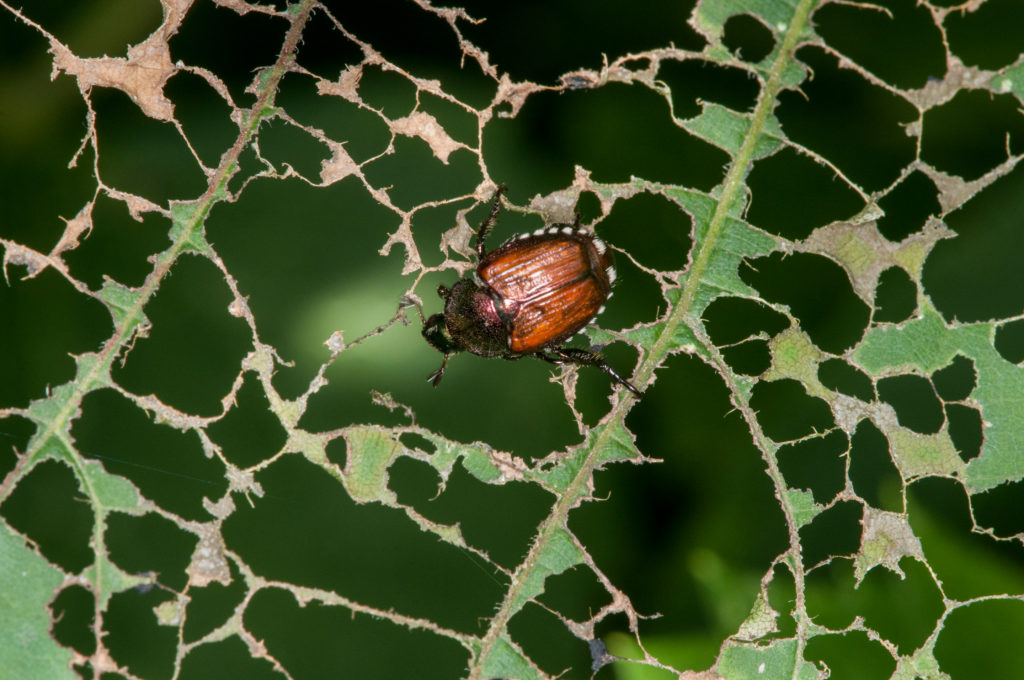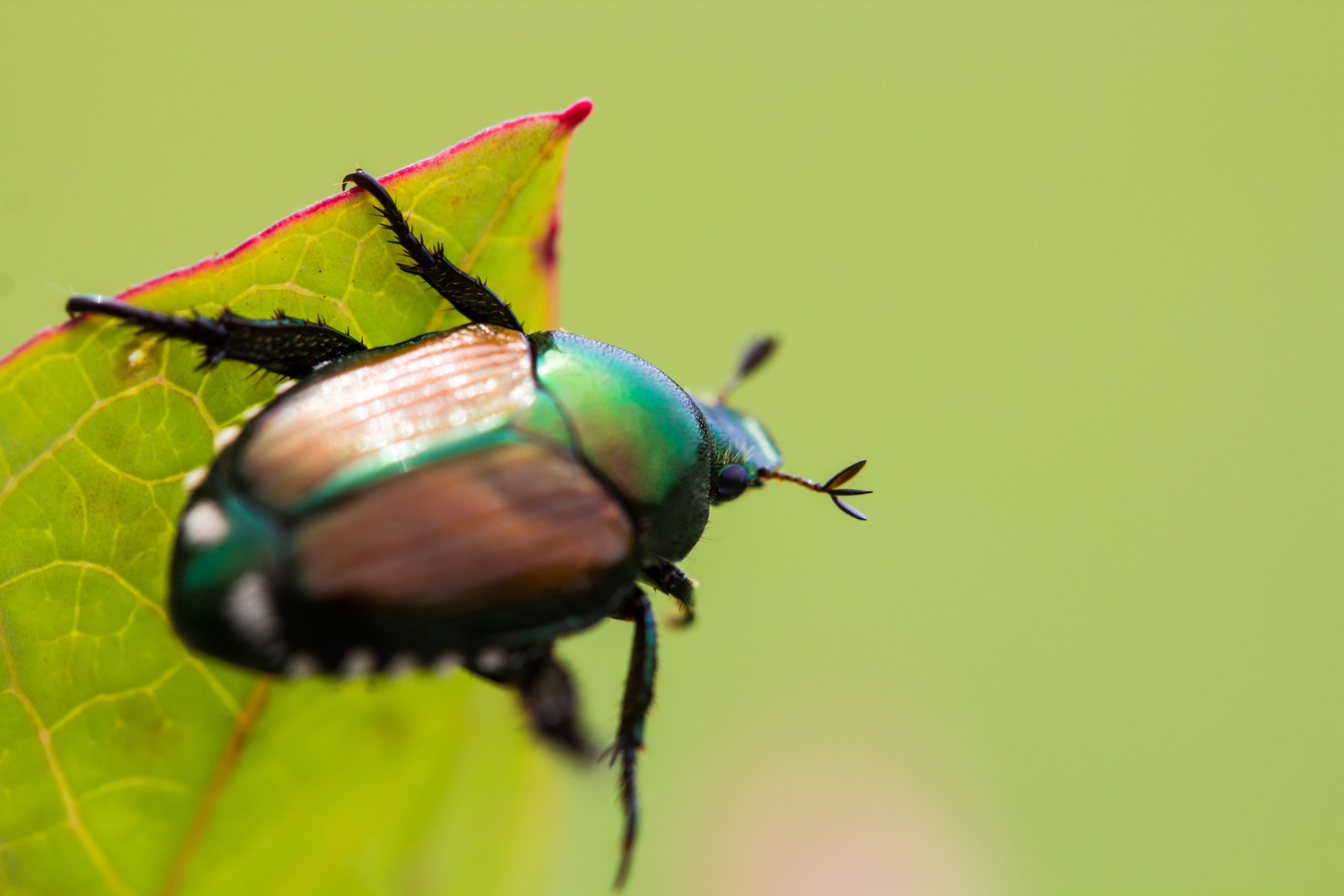Japanese beetles are out in full force this season. If you live in Kansas, you’ve probably heard of these pests going around recently wreaking havoc on plants over the summer. Here at Schendel, we want to make sure you have everything you need to identify and treat for these pests this season.
Identification
Japanese beetles are typically around a half inch long in their adult stage. They have a shiny green color with a brownish color on their wing covers, and tufts of white hairs protruding from the end of their abdomen. Adult Japanese beetles can live anywhere from 30-45 days before the end of their lifecycle.
The most common sign of Japanese beetle activity is the skeletonization of plant leaves. As seen below, Japanese beetles feed on the leaf tissue between veins. This effectively “skeletonizes” the leaves and gives them a lacy and fragile appearance.

Treatment
Treatment for Japanese beetles can be tricky, as these pests are resilient and act in swarms. However, there are a few things you can do to help protect your plants from excessive damage.
Hand Picking – Though tedious, picking beetles off of your plant leaves is an effective way to limit the damage they cause. After collecting them, the easiest way to dispose of them is to add them to a solution of liquid soap and water.
Neem Oil – It can also be possible to deter adult beetles by applying neem oil to your plants. Adult beetles consume small amounts of neem oil and transfer it to their eggs, which prevents larvae from reaching maturity. It’s recommended to reapply neem oil every 3-4 days.
Ask the professionals – We recommend using professional help when treating for beetles. We’re here to help protect your plants from beetles, bagworms, and much more. Schendel offers a treatment for Japanese beetles. If you’re interested, get in touch with us here.
P.S. – For more information on Japanese beetles in Kansas, check out an article by the KSU Department of Entomology here.
